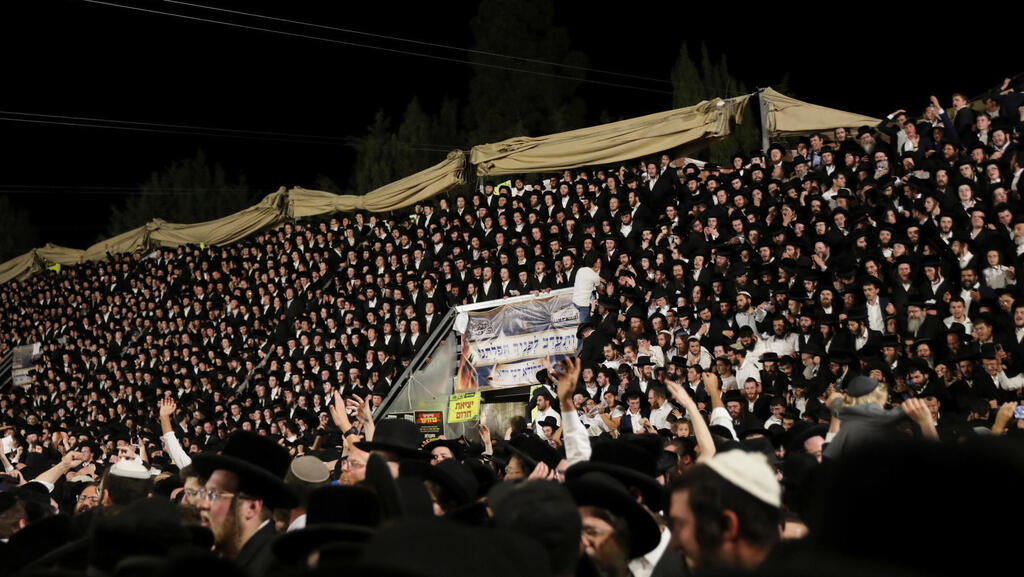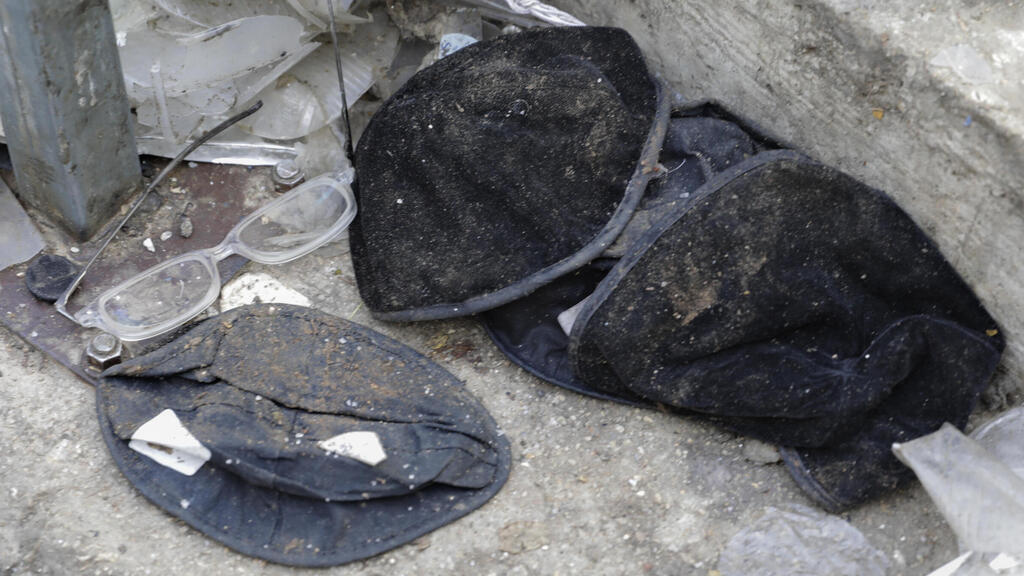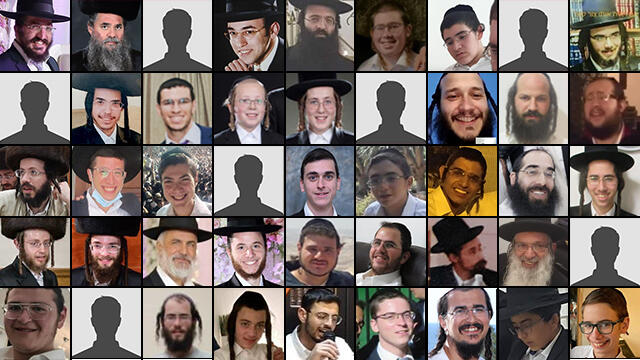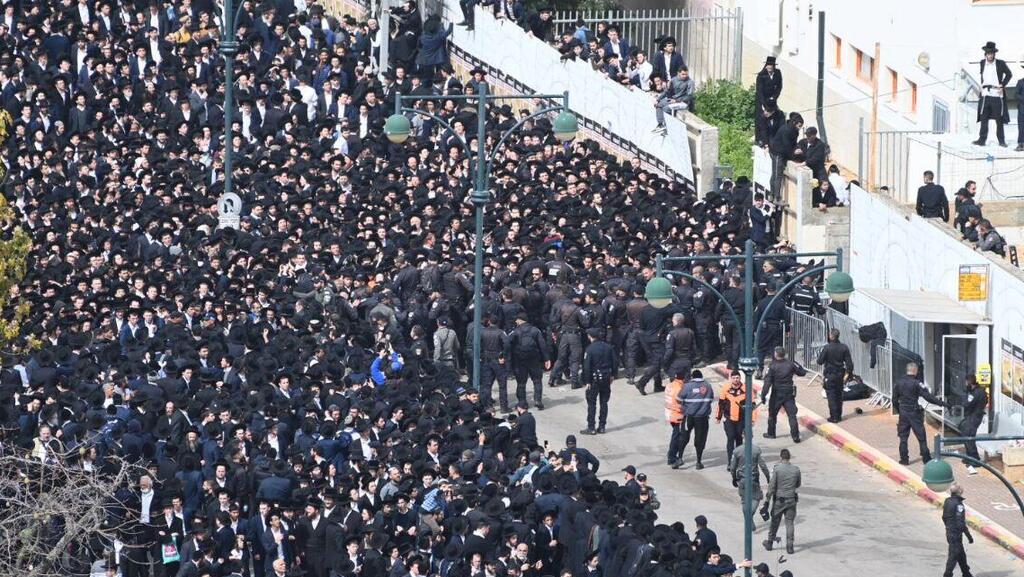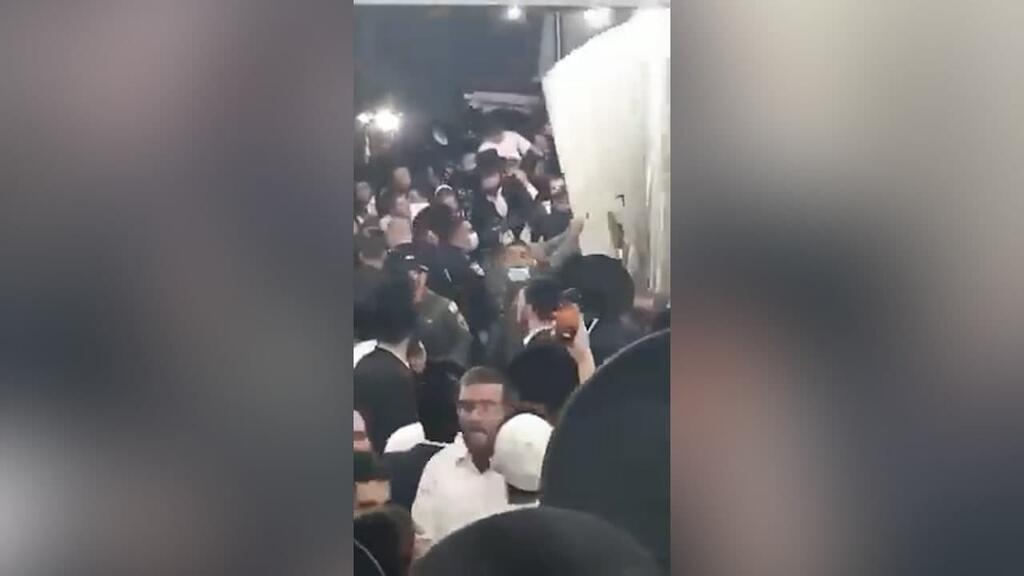Forty-five people died one year ago as a result of incompetent crowd control at the annual Lag B’Omer event on Mount Meron in northern Israel. In the aftermath of Israel's biggest civilian disaster, a commission was set up to investigate and issue a written report. An interim report was issued in November, but the final report is still not ready - one year on.
I went to Meron for Lag B’Omer once, several years ago. It was shocking enough that I remember it well and have recounted it many times.
6 View gallery
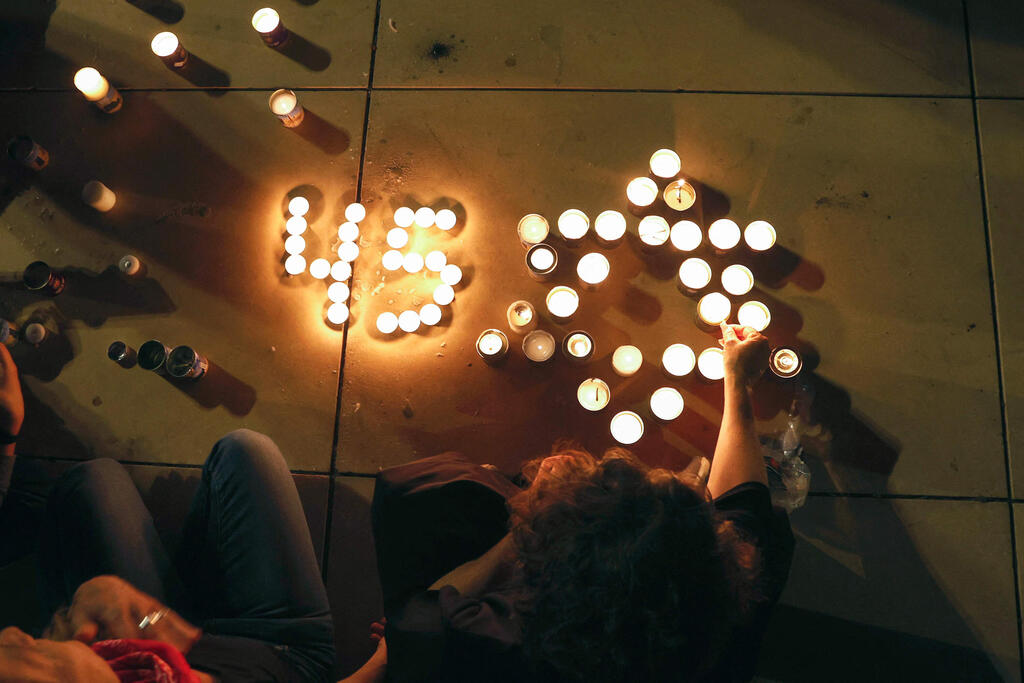

Israelis light candles in memory of the 45 people who died during the Mt. Meron disaster
(Photo: AFP)
Two friends and I made the mistake of arriving too early, and when we got there, not much was going on. Toward the top of the mountain was a stage opposite an arrangement of bleachers and men were setting up what would be a bonfire.
There was a line of chest-high metal barricades that cordoned off a space in front of the stage, which was only accessible through one small opening in the barricades on the far left side, and there was a large open space between the barricades and the bleachers for people to stand on the ground. “What is this for?” I asked someone.
They answered that the then-chief rabbi was going to light the fire. There did not seem to be much going on so we just hung out there in front of the unlit bonfire, front and center.
More people arrived. The space filled quickly and a succession of speeches began. The speeches dragged on and I started to lose patience with it. Nobody knew how long it would be until the chief rabbi appeared.
I wanted to leave or at least make my way to the bleachers to sit down. I turned to move. I am not a large person and I am good at squeezing through crowds but the space had very quickly filled with thousands of people to the point where there was no way for me to move at all, and that realization bothered me.
I am not generally claustrophobic but to this day I remember reports from February 2003 about a fire at The Station Nightclub in Rhode Island, which had been preceded by a stampede at the E2 Nightclub in Chicago just days prior. Both events received significant attention in the United States at the time, and involved unnecessary numbers of casualties resulting from crowded spaces with inadequate exits.
There were a large number of police, firefighters, and EMTs at Meron, and I remember thinking that at any moment they would decide that it was dangerously overcrowded, that they could not continue with the bonfire lighting, and that the crowd would have to be dispersed. No such decision was ever made and the situation got progressively worse.
Even the stage filled with people. Most of those who were set to speak were on stage and those who had already spoken had no way out because the crowd had gotten so dense that the opening in the barricade was blocked.
In the back, people were still cramming to come in. Others may have been trying to squeeze forward to let them in or maybe they were just trying to get closer to the stage. Either way, people were literally pressed against each other and I was being pushed forward into the barrier in front of me. I gripped the top of the barricade, stood with my feet on the bottom rail, and held my arms and legs tense in order to not be pinned against it.
Not far behind my shoulder, a well-built 20-year-old started flipping out, deliberately taking his hands and body and pushing and ramming himself into everyone around him like a panicking animal. A man in his 60s, who had been pressed against the barricade not far in front of him, managed to turn around and scream fiercely in Hebrew. “Why are you pushing me? Do you want to stand in the front? Here, stand in the front.”
The 20-year-old responded in English, screaming that they were pushing him and he could not breathe. Somehow, the two managed to switch places but the young man was still complaining. I leaned forward and turned my head to look at him. I told him that it was not their fault. Everyone is getting pushed forward. There is nothing anybody can do about it. We just have to stay calm and try to not make it worse. Now that he was against the front barrier he should be able to breathe better.
Eventually, it was time for the chief rabbi to come on, and from the back of the crowd on the far left I began to see some commotion. I did not realize what it was at first but it got larger and moved forward through the crowd until I was able to understand.
The chief rabbi had an entourage of bodyguards who were trying to get him to the stage and had no way of doing so other than literally shoving people aside.
Finally, the chief rabbi made it to the stage. I expected him to understand that the situation was not okay and to try to calm the crowd. Instead, he spurred the people on. He spoke for a while, lit the fire, and eventually the crowd dispersed into the greater general Meron/Lag B’Omer festivities of singing, music, dancing, praying, fires and barbecues.
Seeing what I consider to have been the reckless conduct of the now-former chief rabbi and his entourage, I lost confidence in his judgment. When you lose confidence in the personal judgment of a rabbi you have to lose confidence in their halachic [Jewish religious law] and religious authority as well.
Concerns regarding the Lag B’Omer event on Mt. Meron have been repeatedly raised in official reports going back 25 years, but little has ever been done about it. The underlying problems go beyond Meron. Events in Israel tend to get overcrowded. The Western Wall gets overcrowded at events like Birkat Hacohanim or even just on a regular Friday night prayer in the summer.
Estimates of the number who attended the funeral of Rabbi Chaim Kanievsky in March range from 500,000 to 1,000,000. Though measures were taken to maintain safety and there were no deaths or critical injuries, the police line around the cemetery was breached by thousands of people and video footage shows an event that was out of control with “crowd control” measures reminiscent of my experience at Meron.
In 2013, 800,000 attended the funeral of Rabbi Ovadia Yosef. At least 300 of them ended up needing medical attention. In 2015, two died and 85 were injured when 100,000 attended the funeral of Rabbi Shmuel Halevi Wosner.
Efforts to limit the Meron event were rebuffed by Haredi politicians last year despite the multitude of COVID restrictions, which were still in place at the time.
During the Kanievsky funeral in March, as Israel’s emergency services were preparing steps to maintain safety, others, including Rabbi Gershon Edelstein (who is contending to be the most influential rabbi among non-Chassidic Haredim now that Kanievsky has passed), were preparing steps to ensure that the crowd was as large as possible.
Now, as efforts are underway to improve safety for the Lag B'Omer event at Mt. Meron this year, some extremist Haredi groups are reportedly planning to obstruct police measures aimed at better managing the flow of people through the site.
We have to ask, why? The answer is that religious figures absorb themselves in encouraging the religious fervor of their followers and often lose the ability to recognize that there are limits. For example, attending funerals is considered a mitzvah, but when it gets overcrowded, out of control and people are dying, someone must step in.
There are lots of examples of religious leaders losing sight of the limits. There is simply no halachic imperative to have gender-segregated public transportation or to gender segregate public spaces.
There are people who have been unwilling to sit on planes next to those of the opposite sex or who use personal dividers on planes to block themselves from those of the opposite sex. There have been court cases over systematic efforts to prevent advertisements from displaying women’s faces and political posters have been vandalized by supposedly “religious” people in order to destroy images of women’s faces.
This is not a Jewish tradition or halacha. It is the newly created extra-halachic ongoing development of cults. Religious leaders need to be able to say, “enough”. Enough extra-halachic ex-communication of non-orthodox Jewish leaders. Enough comparing them to Nazis. Enough marches around the Old City chanting “Arabs get out”. Enough pictures of Jewish terrorists on the walls of supposedly “religious” Knesset members.
Enough extra-halachic conscientious decisions to live off welfare and other people’s donations while spending entire lifetimes in kollels [institutes of Jewish religious study] without ever working. I had a teacher who said that 30 years ago he thought the practice of having people spend their lives in kollels without working was about to end.
There was no way they were going to be able to continue living like that. Year after year he thought something was about to give, the bubble was about to burst. But it continues. He thinks it is a miracle. An illustration that Haredi Judaism is the proper path, that God controls the universe and provides for the Haredim in particular. In the meantime, many of the Haredim live in poverty in overcrowded apartments, without the basic education to work and function in modern society.
When I look at them, I think the bubble has burst just not the way my teacher thought it would, and they are not willing to recognize that it had. It burst because regardless of their survival, many of them function in barely livable conditions. If God provides for the Haredim, he’s not providing much.
Also, unnecessary numbers of ultra-Orthodox died of COVID-19ת many of whom contracted it by attending mass funerals, mass weddings, or crowded enclosed synagogues and study halls in violation of health regulations.
The Talmud (Sanhedrin 74A) says that there are only three halachic prohibitions over which a person must give his or hers life: idolatry, adultery and murder. “Proper behavior precedes Torah,” the Midrash says (Vayikra Rabbah 9:3).
Attending weddings funerals and minyanim [prayer quorums] are all commandments, but not when they endanger public health. Then, they are no longer halachic, they become extra-halachic. Pirkey Avos 2:2 says, “Torah that is not accompanied by labor leads to sin”. The Breissa (Kiddushin 29A) obligates parents to teach their children a trade. Torah study is a central value of Judaism but there are limits.
None of that matters to the extra-religious. Life to them is a religious game in which they are bound to go to any extreme to demonstrate their dedication. They will continue to engage in reckless behaviors and endure whatever comes their way to demonstrate their fervor, and it does not matter if 45 died at Meron or if thousands died of COVID-19. Those who die will be dead, and the rest of the extra-religious will be left declaring it a miracle that their bubble has not burst.
I have never gone back to Meron. When I was there I walked away with yet another firsthand account of how the rabbinic establishment lacks the judgment to administer religious life in Israel. I was not surprised by what happened last year, and if it happens again, it still won’t surprise me.
Baruch Stein is a writer living in Jerusalem. His work has appeared in media outlets in both the U.S. and Israel.


